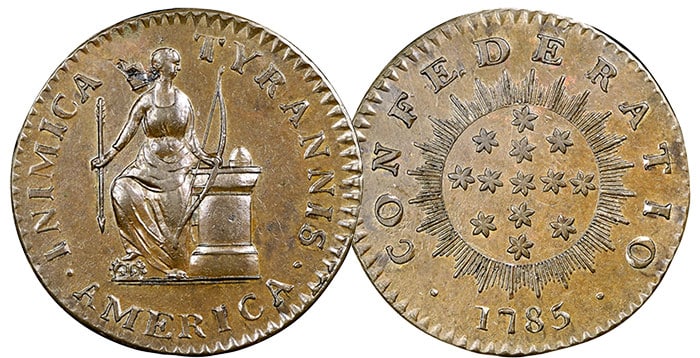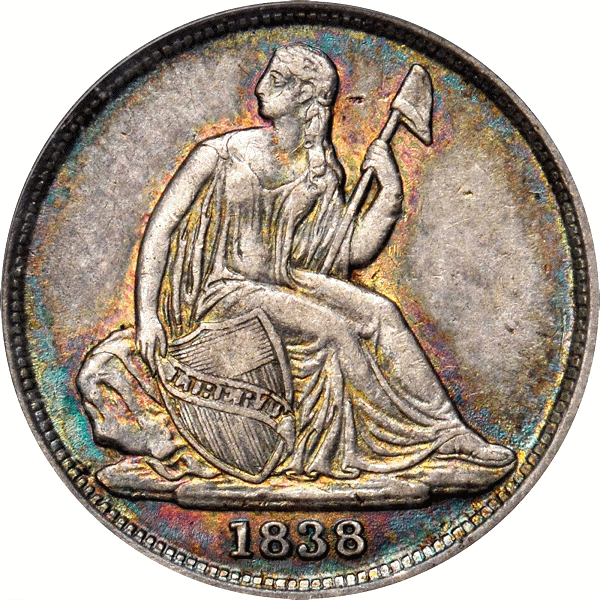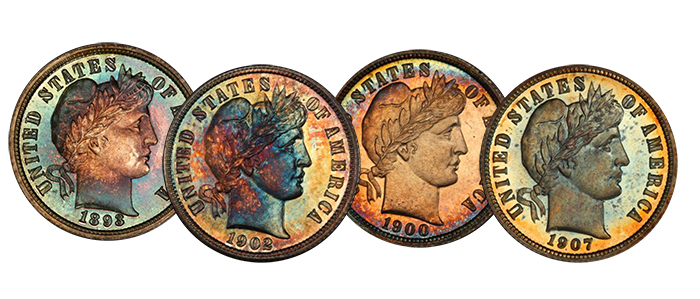
By Dan Duncan – Retired, Pinnacle Rarities ……
In discussions of our nation’s coinage, the use of a female allegory for Liberty dates back to the earliest days of our Independence, pre-dating the foundation of the United States Mint. In 1785, copper patterns were created using designs suggested by the early Superintendent of Finance Robert Morris. The rare pre-federal Inimica Tyrannis features a standing Lady Liberty. However, this was not a revolutionary use of a female representation on coinage. This use of a female is a reflection of other world coinage popular during the cradle years of America. The history of the female form as a symbolic representation of a region, ideal or nation was nothing new around the period of our Mint’s creation.

On coins, this metaphorical use of a female dates back to the Roman Empire. During the reign of Publius Aelius Hadrianus (117 CE – 138 CE), better known as Hadrian, the emperor visited the provinces under his rule and coinage that commemorates these travels picture a number of female personifications including ITALIA (Italy), AFRICA, AEGYPTOS (Egypt), GERMANIA (Germany), DACIA (Romania) and BRITANNIA (Great Britain). Coins from his successor Antoninus Pius 138 CE – 160 CE) also depicted Britannia seated on a pile of stones (likely Hadrian’s wall). She holds a scepter in one hand and a shield rests alongside her. This motif was picked up in the 17th century for the farthing and has been used on a number of denominations since.
It is this depiction of a seated woman that many point to when considering the early design by Morris and more aptly Christian Gobrecht’s Liberty Seated designs. But, this personification of America was not new to the United States, the colonies, or even early American settlements. The new world immediately captivated the civilized world and was the subject of interest for European artists from the 16th century on. Works related to the early Americas often used the image of a seated Native American female clutching a bow and arrow surrounded by images of bounty, strange animals, and sometimes forced colonization.

While misunderstood or at best under-emphasized by modern collectors, the image of a reclined or seated female with various instruments of weighted symbolism was not lost to early purveyors of our nation’s coinages. Surely Morris was aware of Britannia depicted holding a trident professing naval might. Her crowned image is often seen seated on a globe, a nod to the far-reaching colonies of the British Empire. The copper coins produced for Morris in 1785 show a standing “Liberty” with foot upon a crown and the inscription INIMICA TYRANNIS which literally means “Enemy of Tyrants”. Not a subtle inference to our Nation’s newly acquired independence. Less than a decade later, the imagery was refined to the flowing hair works of Robert Scot.
On the various denominations Liberty took on a number of looks, but the idea of Liberty was represented in just a bust. Some capped, some with wreaths and one with the Liberty pole behind. The notion of Lady Liberty was cemented into our nation’s early numismatic symbolism. And the concept was reinforced with the inscription of LIBERTY, often on her crown or just above her head.
By the time Gobrecht began his work on his Seated Liberty designs, the French Marianne had come in favor and this imagery was surely known to newly appointed Mint Director Robert Patterson. Gobrecht’s designs were made from drawings produced by Thomas Sully. Sully’s works were under the direction of Patterson. He desired to create coinage on par with the more advanced European mints. His suggestions included the obverse use of a full figure Liberty seated on a rock with escutcheon and liberty pole topped with the pileus. Having spent time in France, their use of this motif was not unfamiliar to him.
And a seated Britannia was a predominant feature on British and Canadian numismatics. Gobrecht’s Liberty rendition of these themes was used for over five decades until being replaced by the Barber issues of 1892.

Barber’s neoclassic Liberty went back to the earlier use of just the bust of Liberty. He created more Romanesque designs but of lower relief. After the turn of the century, his series’ gave way to an artistic movement as our nation’s coinage entered the so-called Renaissance of U.S. numismatics. During this period, the full-figured allegory of Liberty had a rebirth. She took many forms aligned to sculptures that proliferated monuments and buildings across the country. The works of Saint-Gaudens, Adolf Weinman, and Hermon MacNeil all updated the personification of Liberty. These artful 20th-century designs eventually gave way to the representations of presidents and founding fathers and we transitioned into the modern motifs of our nation’s coinage. The word LIBERTY remained; the female metaphor of Liberty was gone.
Lady Liberty is no longer on any of the circulating denominations. But, the concept of the female allegory continues to grace some of the bullion and commemorative issues. The classic use of the imagery dates back thousands of years. And for two centuries, Liberty’s use on U.S. coinage and paper monies provided daily reminders of the idea of Liberty. Today, our coins are tokens to prominent individuals and grand locales within our borders. Collectors can still relish the beauty and history of the earliest coinage from a budding new country, the symbolism of the growing industrial nation, and eventually the greatness behind a world power. Hopefully, they are still reminded of the founding fathers’ intent first put forward in that early copper pattern.




